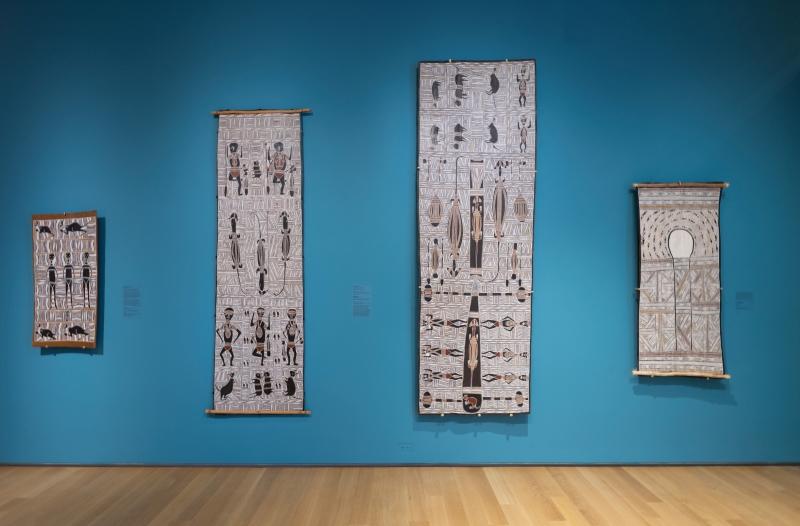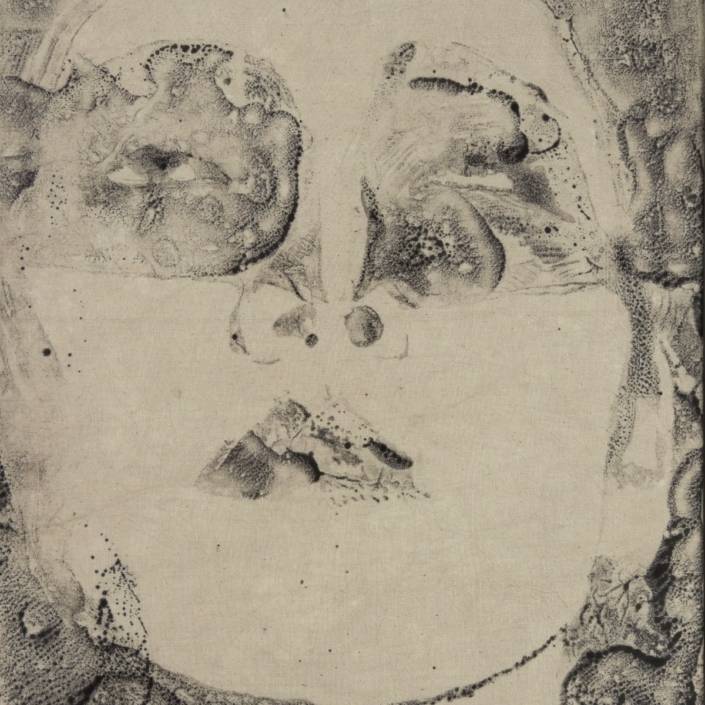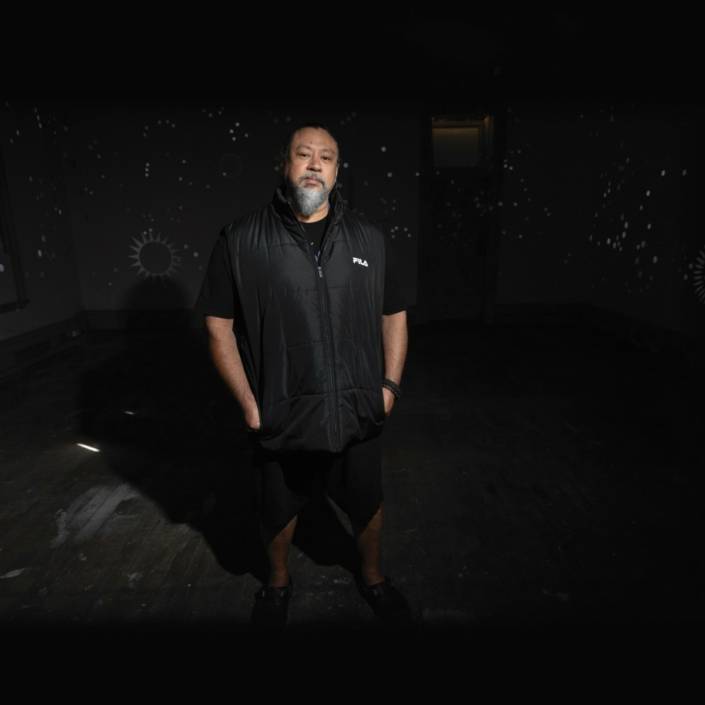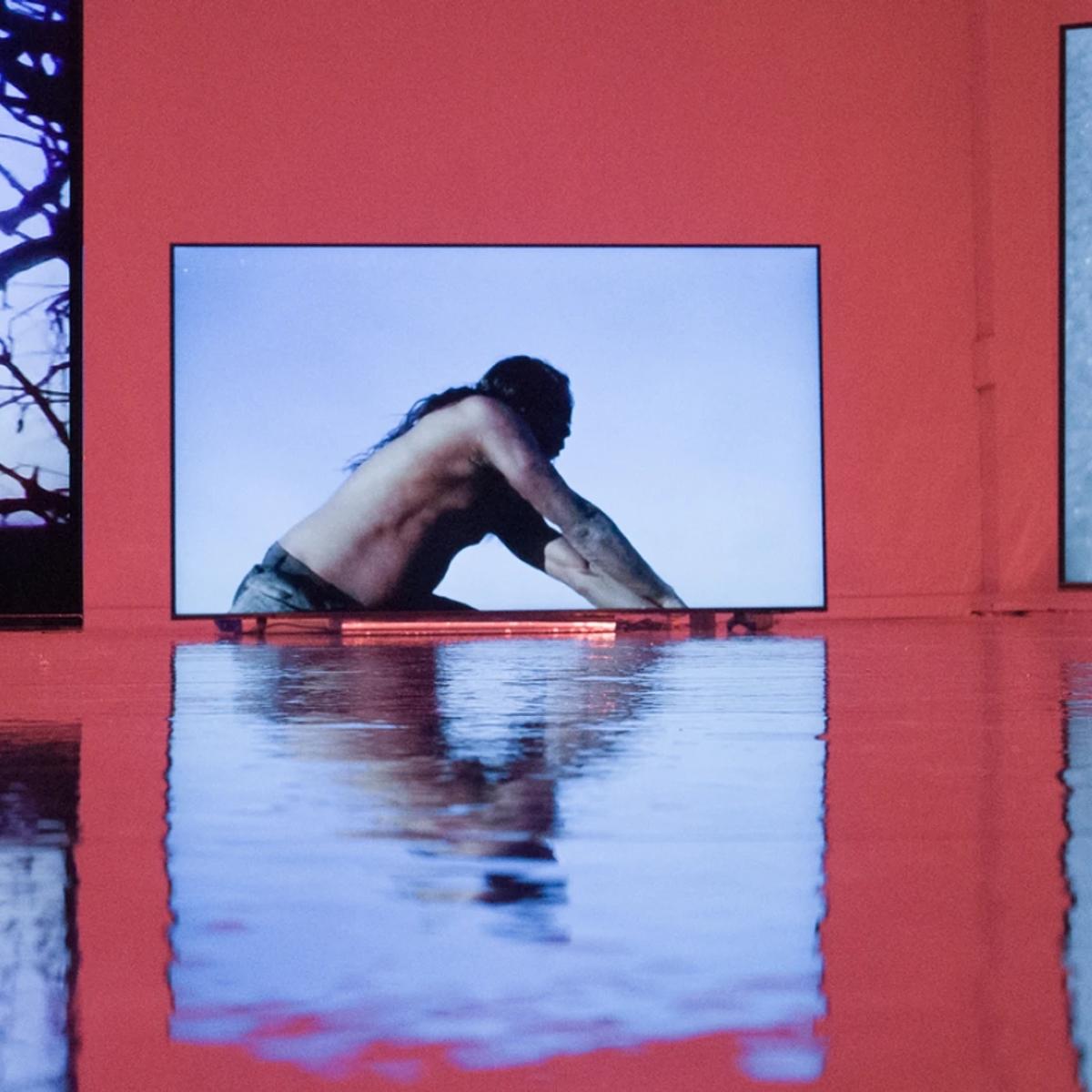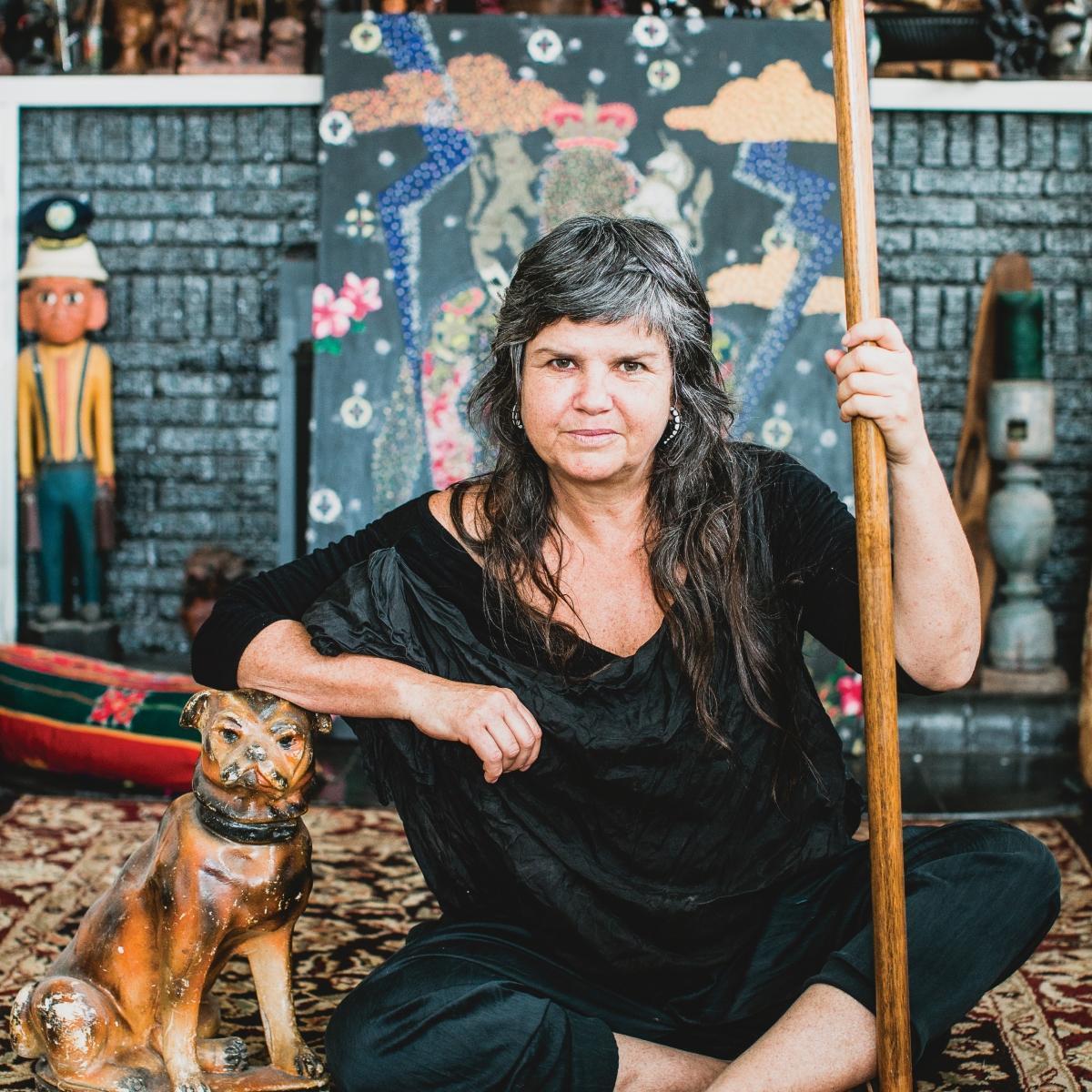Curator’s Radar: Buku-Larrŋgay Mulka Centre
A round up of artists who have recently attracted significant curator attention by way of commissions, acquisitions and inclusion in major public exhibitions.
Words: Briony Downes
Currently touring the USA is Maḏayin: Eight Decades of Aboriginal Australian Bark Painting from Yirrkala, a collaboration between the Kluge-Ruhe Aboriginal Art Collection of the University of Virginia and the Buku-Larrŋgay Mulka Centre in Yirrkala.
Developed over seven years, Maḏayin (a Yolŋu term meaning sacred and hidden) has been curated with a strong focus on gurruṯu (the Yolŋu kinship system) which extends to people, Country, waterways and all they contain. It is the first major exhibition of bark painting to tour the USA and is entirely overseen by a curatorium of Yolŋu artists and knowledge holders from the Buku-Larrŋgay Mulka Centre.
Inspired by an idea instigated by Djambawa Marawili, Maḏayin is designed to bring the included bark paintings to life by incorporating interwoven elements of song, dance and language. “This exhibition is a great opportunity for our people to come together and share our culture, and do research on our paintings,” says Marawili. “Our patterns and designs have been laid on a certain Country, when the ancestors passed through naming it: “You are Marawili, this is your Country, this is your identity.” Every individual clan has their own Maḏayin, but there is also a Maḏayin that brings all those clans together.”
Rather than relying on historical or chronological order, the exhibition takes in a much broader cultural context. It features work drawn from international public collections in addition to 33 newly commissioned pieces, including four large video projections of Yolŋu ceremonial dance by filmmaker and co-curator, Ishmael Marika. “It’s a type of curation the Yolŋu were born into, it’s part of their system,” says Kade McDonald CEO of Agency Projects. “The works might physically be on the wall, but they must be presented with song, they have a dance attributed to them, they represent a sacred place in Country. Everything interconnects and must make sense.”
Embracing the separate yet interconnected moieties Yirritja and Dhuwa, Maḏayin unfolds as a unified whole with historical works mixed in with contemporary works. The idea behind this was to authentically reflect how Yolŋu see their culture. “We have these paintings for future generations to look upon and gain respect for those people that came before,” explains Marawili. “In that way, today we are making art for the children who are coming behind us, giving a clear message to them. It is something that we really need to make the art move into our eyes and our soul, to make it really do something important.”
Maḏayin will show in the USA at the American University Museum at the Katzen Art Centre, Washington D.C. from 4 February to 11 March; the Kleefield Contemporary Art Museum at California State University, Long Beach from 22 August to 2 December; The Fralin Museum of Art at the University of Virginia from 26 January to 21 July 2024; and the Asia Society, New York from 24 September 2024 to 5 January 2025.
Featured image: Installation View of Maḏayin, Kluge-ruhe Aboriginal Art Collection of the University of Virginia. Photo: Rob Strong. Courtesy: Kluge-ruhe Aboriginal Art Collection of the University of Virginia and Buku-larrnggay Mulka Centre in Yirrkala.
This article was originally published in Art Collector issue 103, January-March 2023.

